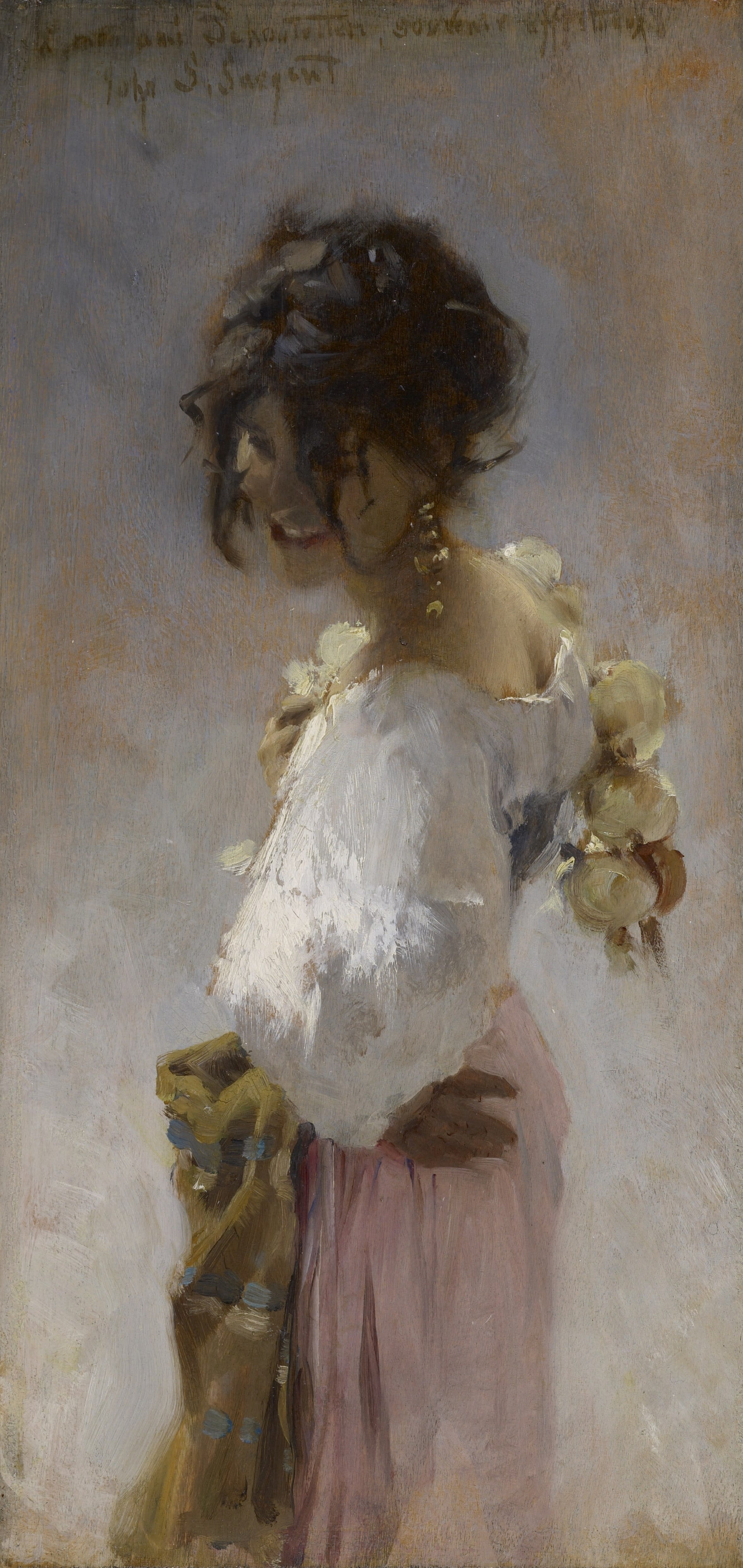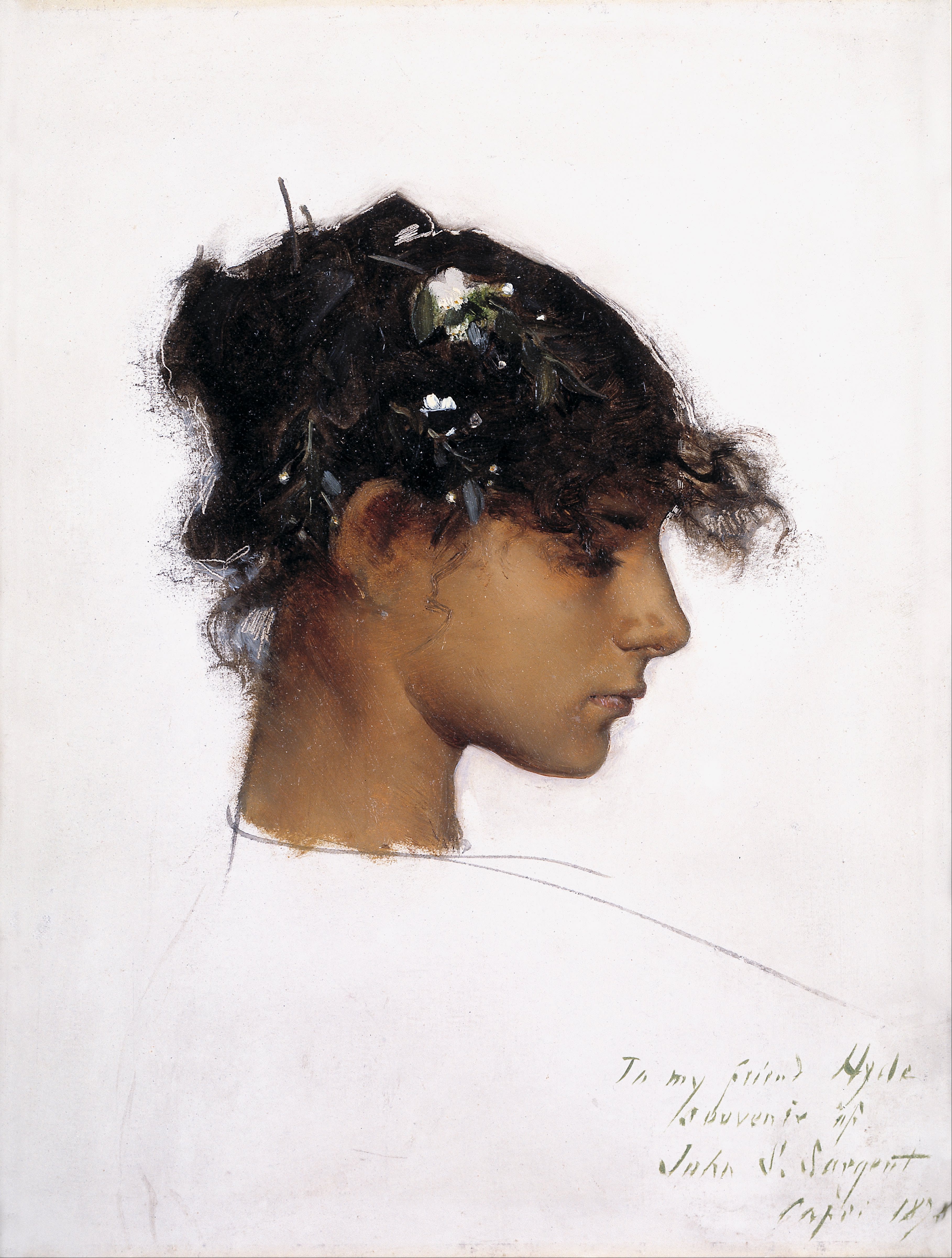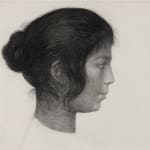Léon Detroy (1859 - 1955)
Portrait of a young girl from Capri, in profile
Signed and located lower left: Anacapri / Detroy
Inscribed lower left: A mon ami…
Black chalk on paper
33 x 41 cm
Portrait of a young girl from Capri, in profile
Signed and located lower left: Anacapri / Detroy
Inscribed lower left: A mon ami…
Black chalk on paper
33 x 41 cm
Drawn to the South of Italy through his love of antiquity, the Post-Impressionist painter Léon Detroy frequently visited the island of Capri in the early 1890s, where he drew this beautiful and raven-haired adolescent girl. Well-known for its turquoise seas, dramatic limestone cliffs and gleaming white houses, the small island opposite Naples became a magnet for artists and writers searching for an ideal place to work in the last decades of the 19th century.
For artists, the appeal of Capri lay not only in the natural beauty of the island but also in the legendary beauty of its population, of mixed Roman, Greek and Phoenician ancestry. Rosina Ferrera, painted most famously by John Singer Sargent (fig. 1), became a favourite model in the late 1870s. As the English artist Adrian Stokes wrote of her: ‘It used to be very easy for artists to find models; but now the grown-up girls are rather shy of strangers, and the priests think it is dangerous for them to pose. For all that, there are some regular models to be had. Rosina is considered the first on the island, and certainly is a remarkably handsome young woman. She sits perfectly as a model of London or Paris’.[1]
Fig. 1, John Singer Sargent, Rosina,
1878, oil on panel, 35.5 x 17.1 cm,
Colby College of Art Museum
By the early 1890s, when Detroy was visiting the island, Rosina was no longer there, having married the American painter George Randolph Barse in 1891 and moved to New York state. We do not know the name of Detroy’s sitter, only that the French artist drew her in Anacapri, the main settlement on the island. Detroy’s drawing is reminiscent of Sargent’s 1878 sketch of Rosina (fig. 2) at the age of seventeen, perhaps a few years older than Detroy’s model. Like Sargent, Detroy depicts his sitter in profile, with her jet-black hair worn up at the back.
Fig. 2, John Singer Sargent, Rosina in profile, 1878,
oil on board, 49.5 x 41.3 cm, Denver Museum of Art
Born in the medieval town of Chinon in the Touraine, Detroy moved to Paris at the age of twenty to study, though soon, inspired by the writings of Georges Sand, returned to the countryside, settling in Gargilesse in the Creuse valley in the centre of France. Inspired by the joy of nature, Detroy focussed on landscapes in a vibrant, post-Impressionist style. Though he remained anchored in the Creuse Valley, Detroy travelled widely over France and Europe, making regular trips to Italy, Belgium, the Baleric Islands and North Africa.
Though Deroy’s painted oeuvre consist principally of landscapes and the occasional still life, his graphic work contains many more portraits, drawn presumably for the pleasure of depicting an interesting countenance encountered on the artist’s travels, rather than for any commercial reasons.



